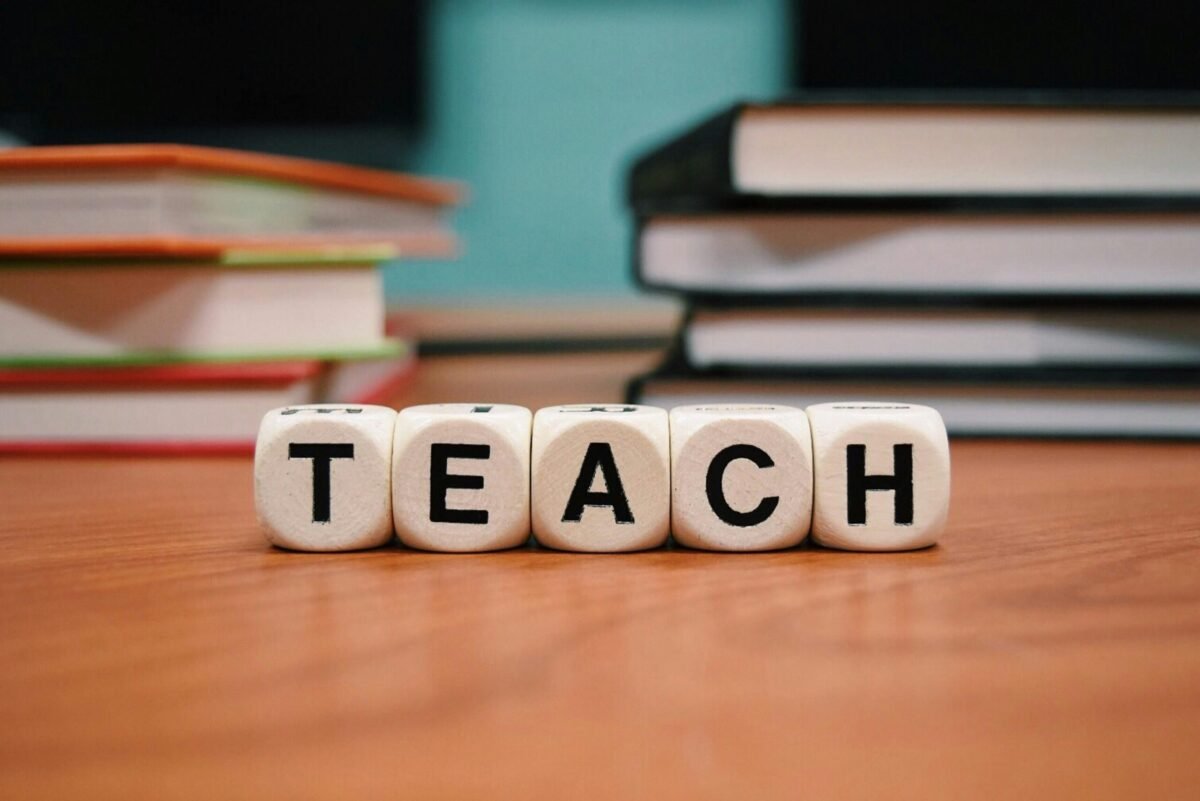Landing an instructional position in a K–12 school isn’t just about meeting the minimum qualifications, it’s about showing schools that you’re a dynamic, skilled educator who brings value, innovation, and heart to the classroom. In today’s competitive education job market, your resume serves as more than just a summary of your past employment. It’s a personal marketing document, one that should highlight not only what you’ve done, but how well you’ve done it, and the positive impact you’ve had on student learning and school communities.
Whether you’re a first-year teacher, a seasoned educator, or transitioning into K–12 instruction from another related field, it’s essential to communicate your instructional strengths clearly and effectively. Schools want to hire professionals who can design engaging lessons, differentiate instruction, support diverse learners, manage classrooms positively, and contribute to the broader school mission. Your resume is your first opportunity to show that you can do all of that, and more.
But here’s the challenge: many educators are great at teaching, mentoring, and inspiring students, yet struggle to articulate their achievements in ways that resonate with hiring administrators. That’s where this guide comes in.
In the sections below, we’ll break down ten essential instructional skill categories, from curriculum design to inclusion practices, and offer real, adaptable examples of how to turn your experience into standout resume bullet points. For each category, you’ll find two sample highlights to inspire and guide your writing. These are crafted to show measurable outcomes, leadership, creativity, and collaboration, traits that school hiring teams are actively seeking.
By using this guide to reflect on your contributions and frame them powerfully, you’ll not only boost your resume, you’ll boost your confidence in your professional story.
Let’s explore the building blocks of a resume that reflects who you truly are as an educator: effective, passionate, and ready to make a difference.
10 Ways to Showcase Your Instructional Skills and Achievements on a K–12 Resume
1. Curriculum Development: Designing for Success
Curriculum development is at the heart of effective teaching. It’s about creating learning experiences that are both engaging and aligned with educational standards. When detailing your experience in this area:
- Be Specific: Instead of saying “Developed curriculum,” specify what grade level, subject, and the outcome. For example:
“Developed and implemented a new curriculum for the 9th grade English Language Arts course, which increased student achievement by 15% on standardized tests and improved student engagement by 25%.”
- Highlight Innovations: If you introduced new methodologies or integrated technology, mention it.
“Collaborated with a team to redesign the 8th grade Social Studies curriculum, integrating project-based learning and current events, resulting in a 20% increase in student participation and a 10% improvement in assessment scores.”
These specifics not only showcase your skills but also demonstrate your ability to drive academic success.
2. Instructional Strategies: Tailoring Teaching to Diverse Learners
Effective instruction caters to the diverse needs of students. Highlighting your adaptability and range of teaching methods can set you apart:
- Diverse Techniques: Mention the variety of strategies you’ve employed.
“Utilized a variety of instructional strategies, such as direct instruction, cooperative learning, flipped classroom, and differentiated instruction, to cater to the different learning styles and levels of the students.”
- Blended Learning: If applicable, discuss how you’ve integrated technology.
“Implemented inquiry-based learning in the 7th grade Science class, encouraging students to formulate hypotheses and conduct experiments, leading to a 30% increase in critical thinking skills as measured by pre and post-assessments.”
These examples not only reflect your versatility but also your commitment to meeting students where they are.
3. Assessment and Evaluation: Measuring and Supporting Student Growth
Assessments are tools for understanding student progress and guiding instruction. When detailing your experience:
- Variety of Assessments: List the types of assessments you’ve designed.
“Designed and administered various formative and summative assessments, such as quizzes, tests, projects, portfolios, and presentations, to measure the students’ mastery of the content and skills.”
- Data-Driven Decisions: Highlight how you’ve used assessment data to inform instruction.
“Developed and piloted a peer-assessment rubric in the 10th grade History class, fostering student accountability and improving collaborative skills, with 85% of students reporting increased confidence in their work.”
These points demonstrate your ability to use assessments not just as evaluative tools but as instruments for continuous improvement.
4. Classroom Management: Creating a Positive Learning Environment
A well-managed classroom is conducive to learning. To showcase your classroom management skills:
- Clear Expectations: Describe the systems you’ve put in place.
“Established and enforced clear and consistent classroom rules and procedures, which reduced the number of disciplinary referrals by 50% and increased the time on task by 30%.”
- Handling Challenges: Discuss how you’ve addressed common classroom issues.
“Introduced a restorative justice approach to address conflicts in the classroom, leading to a 40% decrease in repeat behavioral incidents and promoting a more inclusive and respectful classroom environment.”
These examples highlight your proactive approach to maintaining a productive learning environment.
5. Technology Integration: Enhancing Learning Through Innovation
Incorporating technology can enrich the learning experience. When detailing your tech integration:
- Tools and Platforms: List the technologies you’ve used.
“Integrated technology into the instruction, using tools and platforms such as Google Classroom, Kahoot, Padlet, and Flipgrid, to facilitate communication, collaboration, and feedback among the students and the instructor/teacher.”
- Interactive Learning: Mention how you’ve used technology to engage students.
“Incorporated virtual reality simulations in the 6th grade Geography class to provide immersive learning experiences, resulting in a 25% increase in student engagement and a deeper understanding of global cultures.”
These points demonstrate your ability to adapt to technological advancements and enhance student learning.
6. Professional Development: Committing to Lifelong Learning
Continuous professional growth is essential in education. To showcase your commitment:
- Participation: Mention workshops, courses, or conferences you’ve attended.
“Participated in various professional development activities, such as workshops on curriculum development, webinars on instructional strategies, and courses on assessment and evaluation, to enhance my knowledge and skills as an instructor/teacher.”
- Leadership: If you’ve led professional development sessions, highlight it.
“Led a series of professional development workshops for colleagues on integrating social-emotional learning into daily lessons, receiving positive feedback from 90% of participants and fostering a more supportive school climate.”
These examples reflect your dedication to personal and professional growth.
7. Collaboration and Communication: Building Strong Educational Partnerships
Effective educators collaborate with various stakeholders. When detailing your collaborative efforts:
- Teamwork: Describe your collaboration with colleagues.
“Collaborated and communicated effectively with the students, using various channels such as email, phone, and video conferencing, to provide support, feedback, and guidance.”
- Engaging Stakeholders: Discuss how you’ve communicated with parents and administrators.
“Coordinated with the school counselor to implement a peer mentoring program, enhancing student relationships and providing additional support for at-risk students, with 80% of participants reporting improved social connections.”
These points highlight your ability to work collaboratively and maintain open lines of communication.
8. Leadership and Initiative: Taking Charge and Inspiring Others
Leadership in education involves guiding and inspiring others. To showcase your leadership:
- Roles: Mention any leadership positions you’ve held.
“Took on a leadership role as the head of the English department, overseeing the curriculum development, instructional delivery, and assessment and evaluation of the English courses in the school.”
- Initiatives: Discuss any programs or projects you’ve initiated.
“Initiated and organized a school-wide literacy campaign, including book drives and reading challenges, resulting in a 15% increase in student reading levels and fostering a community-wide emphasis on literacy.”
These examples demonstrate your proactive approach and ability to lead by example.
9. Diversity and Inclusion: Embracing All Learners
A commitment to diversity ensures all students feel valued. When highlighting your efforts:
- Inclusive Practices: Describe strategies you’ve implemented.
“Worked with and supported students from diverse backgrounds, cultures, and abilities, using strategies such as culturally responsive teaching, universal design for learning, and multi-tiered system of support, to ensure that all students have equal access and opportunity to learn and succeed.”
- Support Systems: Discuss how you’ve supported diverse learners.
“Developed and implemented a multicultural education unit in the 5th grade Social Studies class, celebrating various cultures and histories, which increased student appreciation for diversity and reduced instances of cultural misunderstandings.”
These points reflect your dedication to creating an inclusive learning environment.
10. Creativity and Innovation: Inspiring Curiosity and Critical Thinking
Creative teaching fosters a love for learning. To showcase your creativity:
- Innovative Projects: Mention any unique projects you’ve implemented.
“Created and implemented a creative idea for the instruction, such as a gamified learning system, a flipped classroom model, or a student-led conference, which increased student motivation, engagement, and ownership of their learning.”
- Problem-Solving: Discuss how you’ve encouraged critical thinking.
“Introduced a “Genius Hour” project in the 8th grade Science class, allowing students to explore topics of personal interest, leading to a 20% increase in student-driven inquiry projects and presentations.”
These examples highlight your ability to inspire and engage students through creative approaches.
In Closing: Crafting a Resume That Reflects Your Impact
Your resume is more than a document; it’s a reflection of your teaching journey and the impact you’ve had on students. By detailing your achievements in these key areas, you provide a comprehensive picture of your capabilities and dedication. Remember to:
- Tailor Your Resume: Customize your resume for each position, aligning your experiences with the job requirements.
- Use Action Verbs: Begin bullet points with strong action verbs to convey your contributions effectively.
- Quantify Achievements: Where possible, include numbers to demonstrate the scope and impact of your work.
By thoughtfully presenting your instructional achievements, you position yourself as a valuable asset to any educational institution.
Want more resources to help you grow your instructional career in K–12 education?
Explore our Career Advice section for expert resume tips, interview guidance, and professional development tools designed to help educators and others who work in schools thrive.
Related Posts
How to Conduct a Self-Assessment to Identify Your Strengths and Weaknesses
Tips to Identify Your Accomplishments and Achievements in Preparation for Writing a Resume









